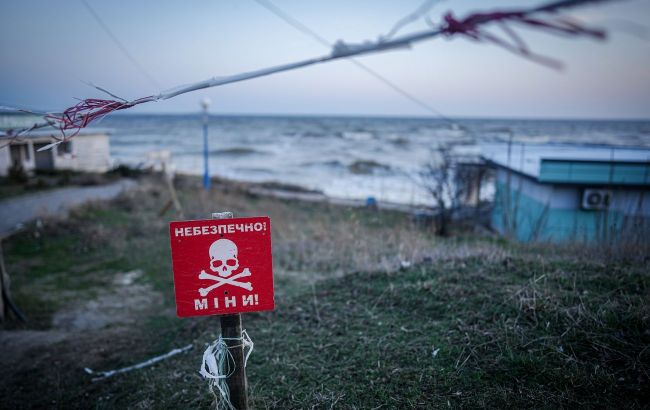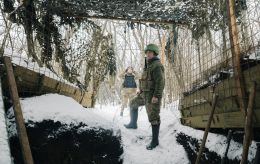Dolphins are dying: Unseen ecological tragedy unfolding in Black Sea
 How the war affected marine life (photo: Getty Images)
How the war affected marine life (photo: Getty Images)
More than three years of Russian armed aggression have inflicted massive damage on the Black Sea. Oil spills, mine pollution, and the Kakhovka disaster have led to the collapse of entire ecosystems. Doctor of Biological Sciences and Deputy Director for Research at the Institute of Marine Biology of the NAS of Ukraine, Viktor Demchenko, shared his insights on the ecological impact of the war.
Which species are at risk of extinction
According to Demchenko, the marine zander—a species that lived only in the Dnipro-Buh estuary—may have perished due to the Kakhovka disaster. It was swept into the open sea and could not tolerate the salinity. This species was listed in the Red Book of Ukraine.
"Currently, we conduct research in the Black Sea only at one location — Cape Malyi Fontan near the biological station of Odesa National University. We are allowed to go only up to 100 meters offshore. Other areas are closed off, and we cannot assess what is happening with the populations of various species," says the scientist.
What will happen to the dolphins
"There is also a problem with dolphins. They are harmed by noise, oil pollution, and explosions. There are varying estimates of dolphin deaths across the Black Sea, but the scale is difficult to determine. After the tanker disaster in the Kerch Strait (on December 15, 2024, 8 tons of fuel oil spilled into the sea — ed.), there were several reports of dolphin deaths and strandings on the Crimean coast," the biologist adds.
He also notes that dolphin deaths are recorded yearly, and numbers vary depending on the intensity of military activity and other factors.
"Before the war, one of the biggest problems in both the Azov Sea and the northwestern Black Sea was poaching — dolphins would get tangled in nets and drown because they need to surface regularly to breathe," says the scientist.
Demchenko adds that currently it is difficult to assess the full scale of these species' deaths. According to him, we will continue to find a certain number of dead dolphins on the shores of Crimea and Ukraine's Black and Azov Sea coastlines.
Are there cases of mass disease or extinction?
The biologist emphasizes that scientists currently lack access to objective data on fish populations in the Black Sea and can only speak about general trends.
"There have been no major incidents of fish dying due to disease in the Black Sea in recent years. Occasionally, fish die-offs are recorded in the Khadzhibey and Tyligul estuaries and some other marine areas. These are caused by a rapid drop in oxygen levels in the water," explains Demchenko.
However, these are "typical" problems for these water bodies, occurring when several factors combine (pollution levels, high temperatures, lack of wind), leading to oxygen depletion in bottom layers, causing mass fish deaths and beachings.
"This can be tackled by improving water exchange, increasing river runoff, enhancing lagoon-to-sea connectivity, and reducing pollution. Such large-scale changes must be implemented at the state or regional level through dedicated programs," the biologist stresses.
Demchenko notes that reduced human impact on the Black Sea has led to certain improvements in the ecosystems. For example, the Russian sturgeon has resumed migration and can be caught near Zaporizhzhia now.
 The consequences of the Kakhovka disaster (photo: Getty Images)
The consequences of the Kakhovka disaster (photo: Getty Images)
Previously, we reported that rapana snails are displacing mussels in the Black Sea — a species whose population had already significantly declined due to the effects of the Kakhovka disaster.

